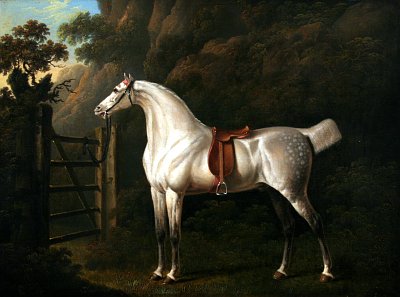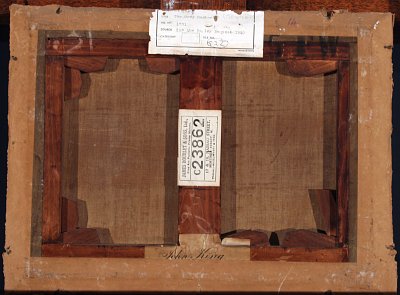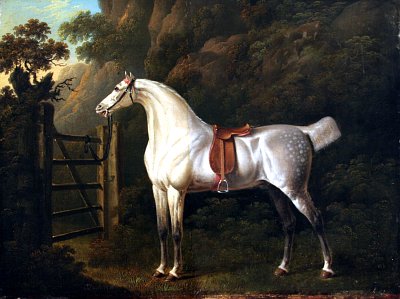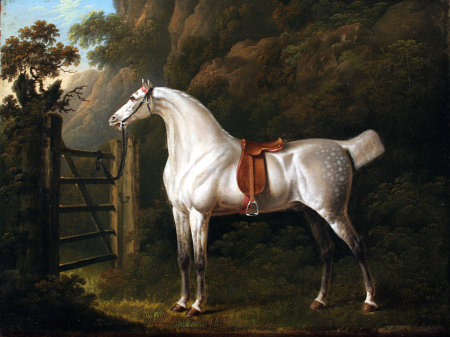|
G. Towne
Title: The Grey Hunter
Technique: Oil on canvas
Signature: present and dated 1791
Dimensions: 29 x 38 cm
Frame: Wooden, gesso moulded, gilded gold
Treatment: October – December 2006
CONDITION REPORT
SECONDARY SUPPORT: This is a 5-member stretcher and all 12 keys are present. On the cross-member the following inscription can be read;
The following inscriptions can be seen:
James Bourlet & Sons, Ltd.,
Fine Art Packers, Frame Maker
C 23863
17 & 18, Nassau Street,
Mortimer Street, W.
Phone; - Museum 1817 & 7588
The label is seen on the top right hand side, on fine pulp paper with black ink print.
“5FW” can be read on the top right hand side. This has been sprayed on with a lettering stencil. A label seen on the bottom in the centre reads:
John King
Dealer in works of art
83 Rhenish Street
Liverpool
PRIMARY SUPPORT: This is a medium-weight tabby weave linen and the tacking margins have been removed. The canvas has been lined using a light weight canvas. This has a 12 mm turn-over edge.
GROUND: The ground appears to be cream in colour, applied thinly and is in a good condition.
PAINT LAYER: The artist has been evenly applied, and is in astonishly good condition.
VARNISH LAYER: The natural resin varnish layer is discoloured and a layer of surface dirt covers this. This is not the original varnish. Under UV light it appears to be thickly applied, masking the image and the retouchings do not appear separately.
TREATMENT CARRIED OUT
Photographic record was taken and this was maintained throughout treatment.
Tests were carried to remove the surface dirt safely and effectively. An appropriate reagent was identified and cleaning proceeded.
Following tests including a safety margin-cleaning test, an appropriate organic solvent was used to safely remove the varnish layer. Cleaning proceeded using a swab stick.
Dirt was removed from between the canvas and the stretcher bar and the back of the canvas was cleaned.
An isolating conservation varnish was applied with a brush. A few small localized losses were retouched and a final varnish applied.
Following the restoration of the frame, the painting was secured in the frame using brass plates.
|
|

Whole front, before treatment
|

Whole back, before treatment
|

Whole front, during surface dirt and varnish removal
|

Whole front, after treatment
|
|




